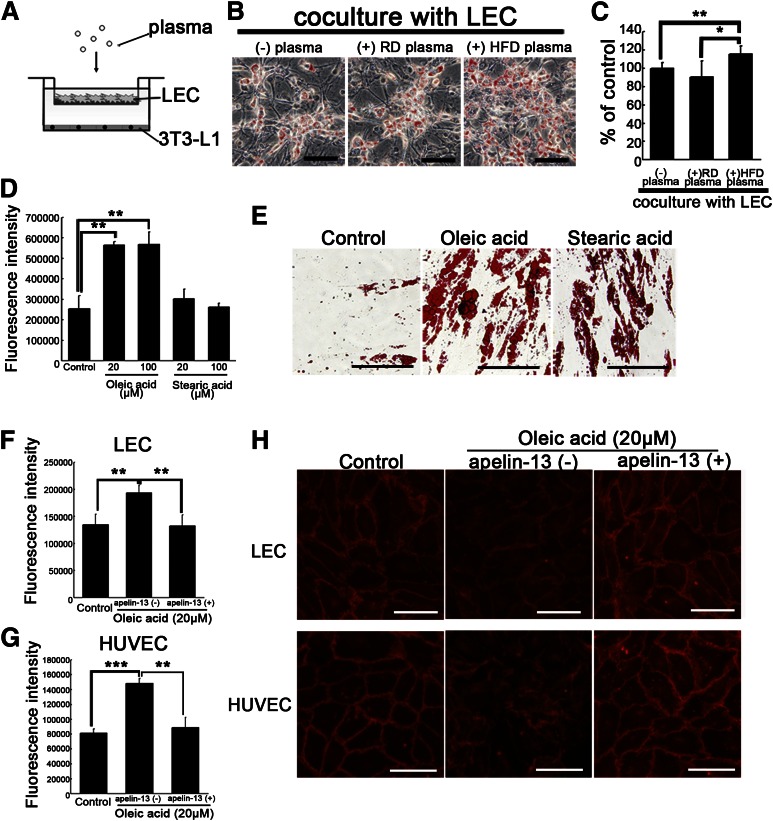FIG. 4.
Apelin inhibits vascular hyperpermeability induced by oleic acid, thereby blocking adipocyte differentiation. A: Schematic illustration of coculture study of LECs with 3T3-L1 preadipocytes in the presence or absence of plasma. Confluent LECs were inserted with or without plasma on day 2 after initiation of differentiation. B: 3T3-L1 preadipocytes were stained with Oil-red-O (red) on day 9 after initiation of differentiation. C: Quantitative evaluation of lipid droplets of 3T3-L1 preadipocytes. D: Treatment with oleic acid increased the fluorescence intensity of permeated FITC-dextran from LECs, as compared with the control. E: Human subcutaneous preadipocytes were stained with Oil-red-O (red) on day 9 after initiation of differentiation with oleic acid or stearic acid. Fatty acid–exposed culture showed an increased amount of lipid droplets compared with the control. The addition of apelin-13 blocked the hyperpermeability of LECs (F) and human umbilical vein endothelial cells (HUVECs; G) induced by oleic acid. H: Immunohistochemistry of VE-cadherin (red) in LECs and HUVEC, showing discontinuous staining of VE-cadherin after incubation with oleic acid. Apelin-13 blocked the discontinuity of staining of VE-cadherin and the gap formation induced by oleic acid. Scale bars indicate 200 μm (E) and 100 μm (B and H). Data are expressed as mean values ± SD. *P < 0.05, **P < 0.01, ***P < 0.001.

